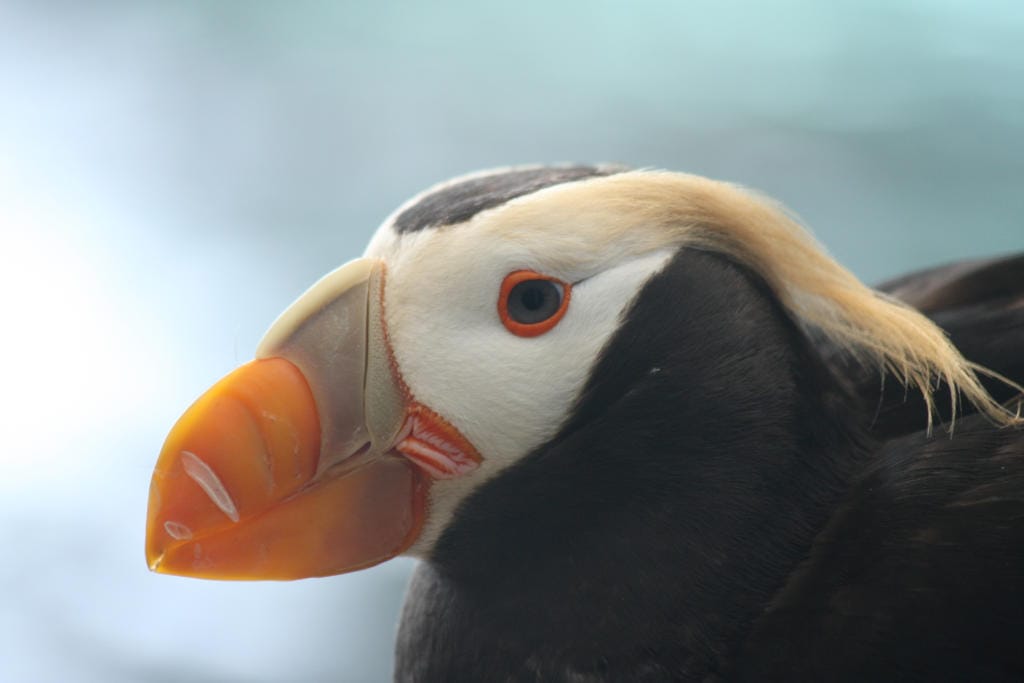The tufted puffin, an iconic seabird that can often be spotted at Haystack Rock in Cannon Beach during nesting season, will not be listed under the federal Endangered Species Act despite local efforts.
The U.S. Fish and Wildlife Service announced Wednesday that the puffin does not warrant listing as threatened or endangered. A recent estimate of the species across a range that extends from California to British Columbia — and includes Alaska, as well as Japan and Russia — found that the majority of the known population appears to be trending up or staying stable.
The federal agency believes the birds are undergoing a range contraction, specifically at the southern end of their range, where researchers and other observers have seen a decline.
The species continues to be widely distributed across the northern part of its range and maintains a high overall abundance, according to the agency. A recent estimate places the total population of tufted puffins at approximately 3 million birds.
“The tufted puffin is an essential member of the coastal and marine ecosystems in which it resides,” Stewart Cogswell, the supervisor of the Fish and Wildlife Service’s Anchorage Fish and Wildlife Conservation Center Office, said in a statement.
“Although the species does not warrant listing under the Endangered Species Act, we will continue to work with others to monitor and conserve this iconic seabird throughout its range.”
On the North Coast, the tufted puffin is instantly recognizable, a sort of mascot for Cannon Beach along with Haystack Rock. Residents celebrate the return of the puffins to the rock each year.
Friends of Haystack Rock has helped fund research on tufted puffins along the northwest coast through a variety of campaigns. Recently, the group purchased and donated transmitters to be attached to birds at Washington state colonies.
Three Arch Rocks National Wildlife Refuge in Tillamook County is the largest known puffin colony along the Oregon Coast with 220 tufted puffins counted on the islands in 2019.
Still, North Coast residents worry about a possible decline of puffin numbers locally. Between 100 to 130 birds have returned to Haystack Rock each year for the past 10 years, but a population estimate in the 1980s put more than 600 birds on the rock — a number that may have been exaggerated, federal biologists now say.
The birds can be difficult to study. Their colonies are located on islands or mainland cliff faces. They burrow into the rock and cannot be easily counted from a distance. They are prone to abandon their nests if they feel unsafe.



